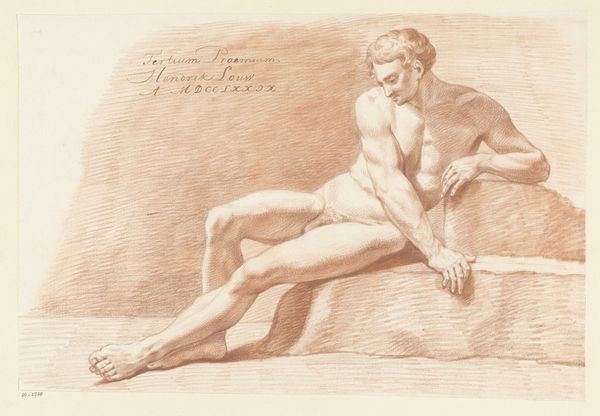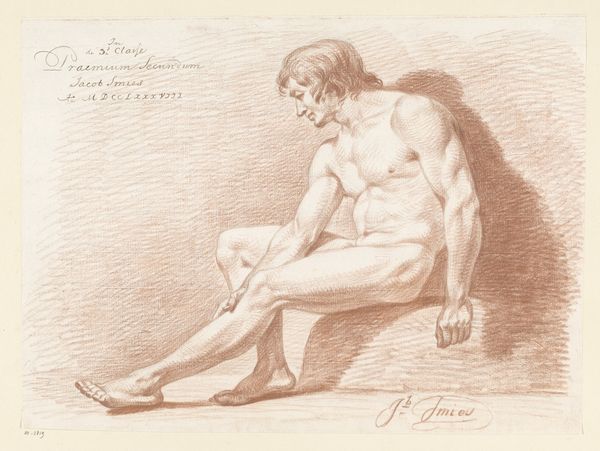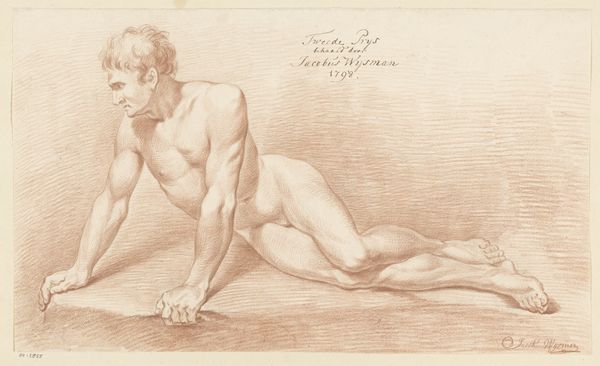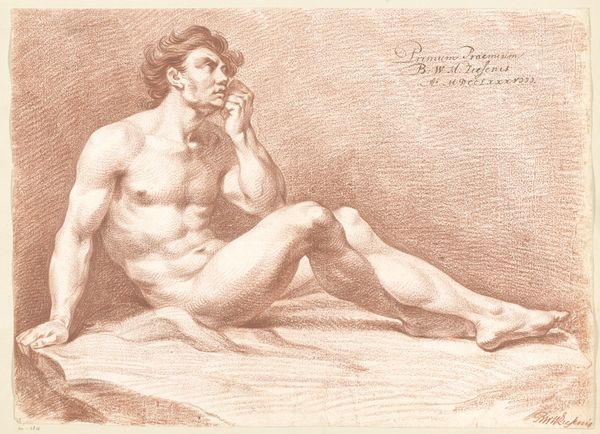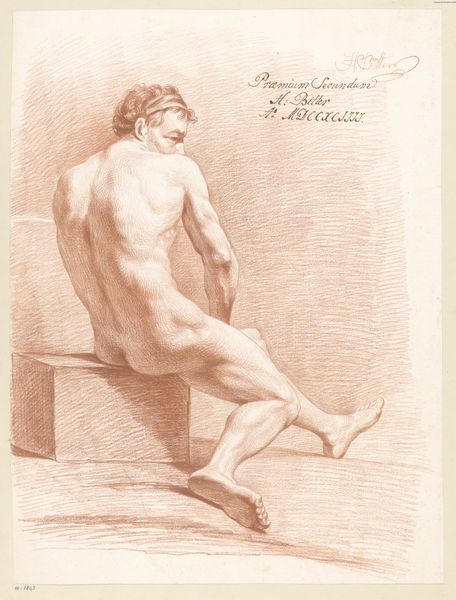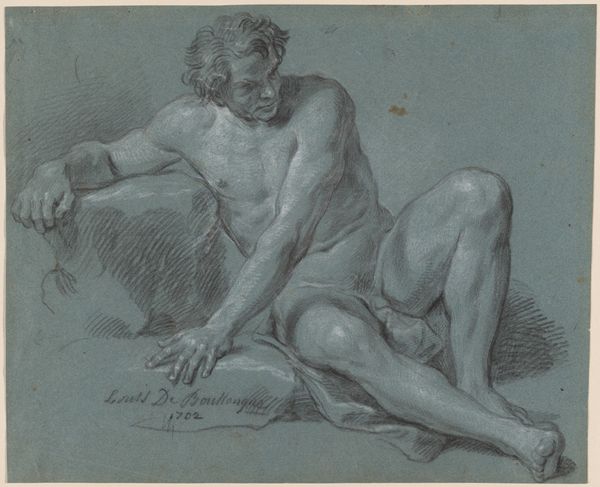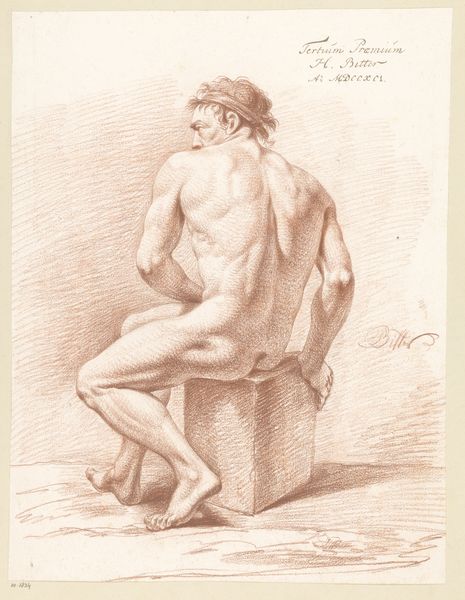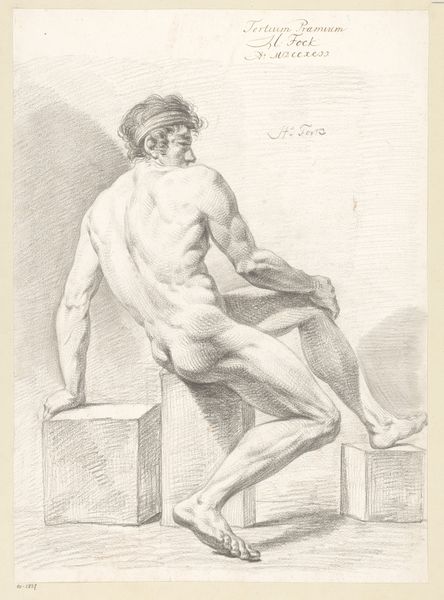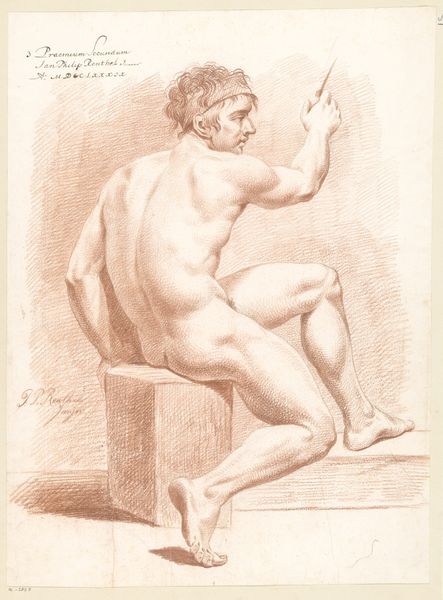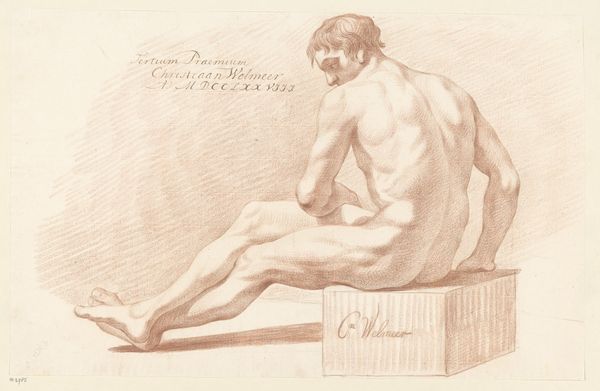
drawing, pencil
#
portrait
#
drawing
#
classical-realism
#
charcoal drawing
#
figuration
#
pencil drawing
#
pencil
#
portrait drawing
#
academic-art
#
nude
Dimensions: height 408 mm, width 574 mm
Copyright: Rijks Museum: Open Domain
This is "Seated Male Nude, Seen from the Side (1st Prize 1789)," a drawing by Johannes Ziesenis. It was made in 1789, a time when artists were trained through rigorous academic study, often focused on mastering the human form. This nude study is a fascinating example of how the male body was viewed and portrayed in the late 18th century. The subject sits passively with his gaze off to the side, in a pose that feels both vulnerable and idealized. What does it mean to depict the male nude in this way? How does it play with the ideas of masculinity and power? Consider the historical context of this work. It was created during the Enlightenment, a period that emphasized reason and the pursuit of knowledge. Yet, ideas about gender and class remained deeply entrenched. Ziesenis engages with these issues by portraying the male nude with an eye to classical aesthetics and a sensitivity to emotional expression. In the end, it prompts us to think critically about how bodies are represented and the stories they tell us about our culture.
Comments
No comments
Be the first to comment and join the conversation on the ultimate creative platform.
